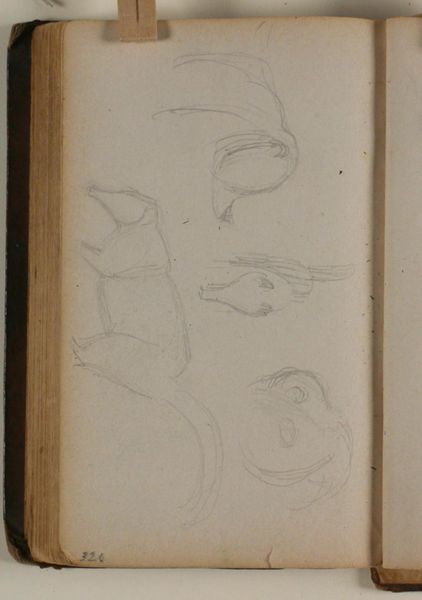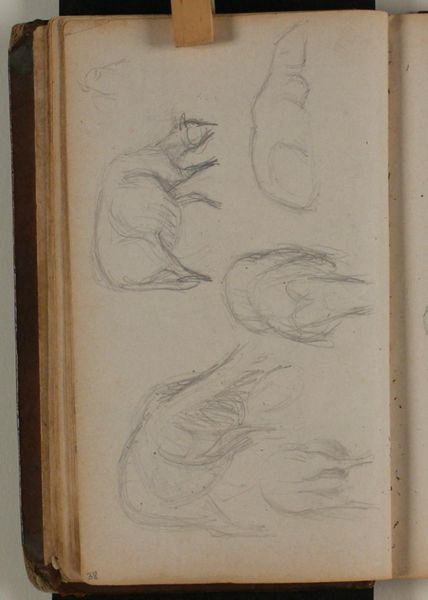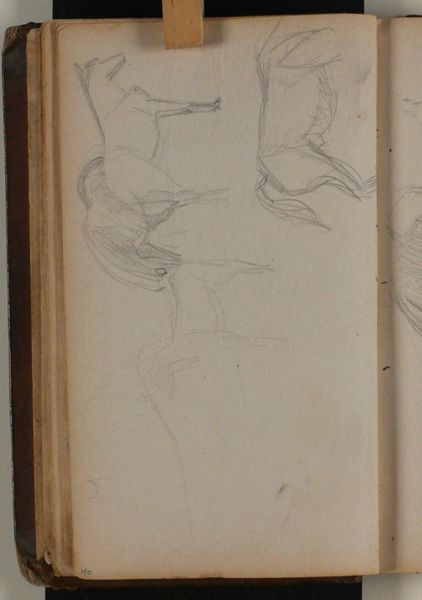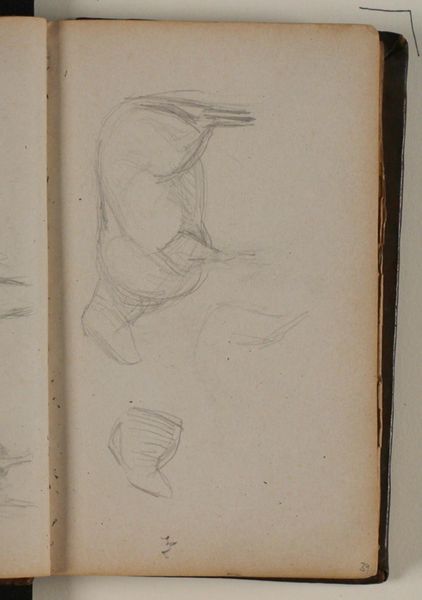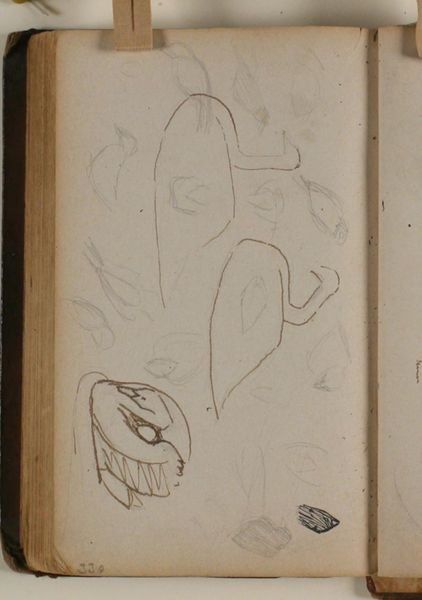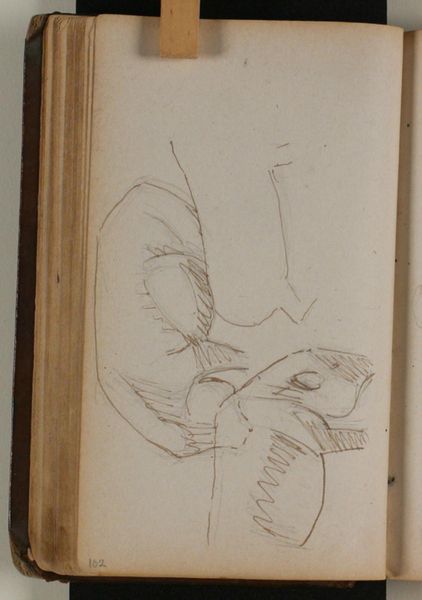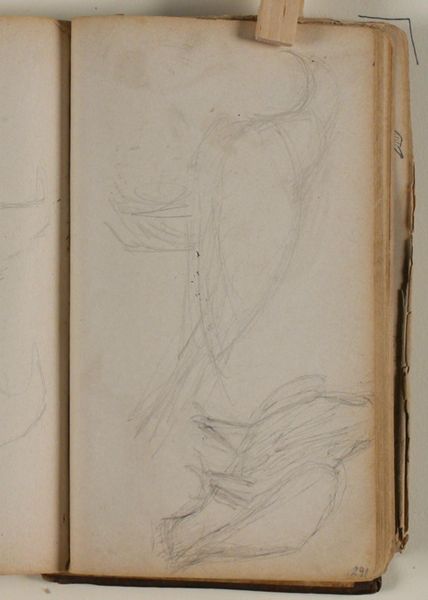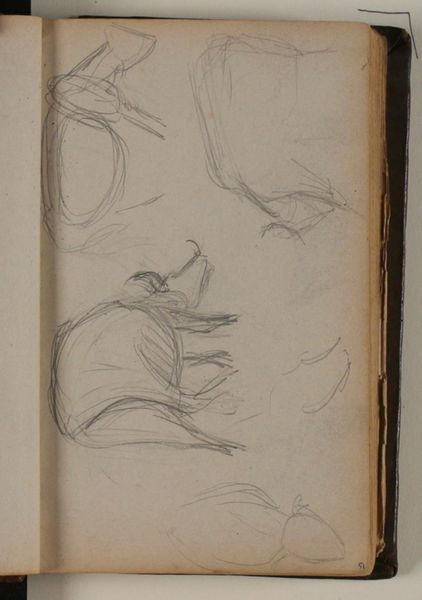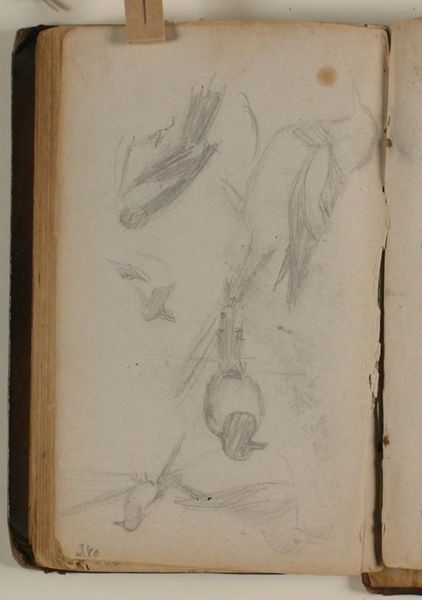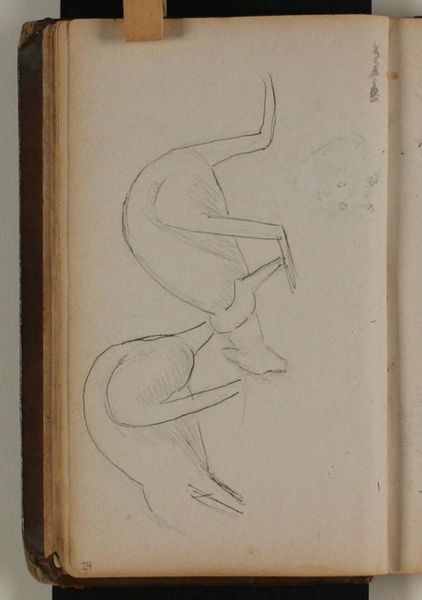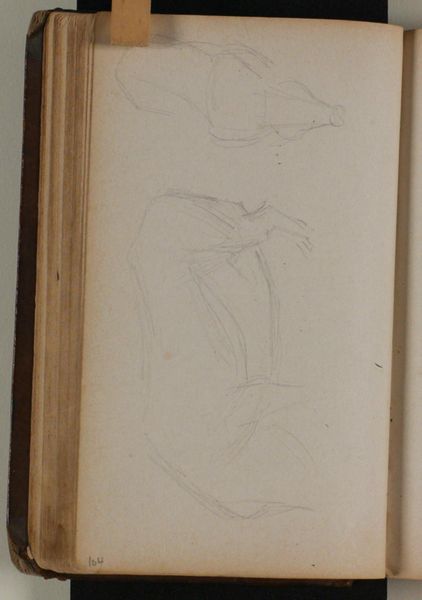
drawing, paper, pencil
#
drawing
#
figuration
#
paper
#
pencil
#
line
Curator: Welcome. We're standing before "Studie af isbjørne," or "Study of Polar Bears," a pencil drawing on paper by Niels Larsen Stevns, dating sometime between 1864 and 1941. Editor: Immediately, what strikes me is the tentative quality of the lines. It’s less a finished image and more about capturing the mass and weight of these creatures through observation, you can almost see the animal. Curator: Absolutely. This work provides a fascinating insight into Stevns' artistic process. During his career, which spanned the late 19th and early 20th centuries, he dedicated significant effort to the public sphere, which included drawing these polar bears, to teach others of the North. Editor: Thinking about the materiality, the simple graphite on paper elevates the ordinary act of sketching into art. You see the labor involved, the repeated lines searching for form, almost giving substance. Did Stevns ever visit these polar regions to see a real one, do we know? Curator: Though born in Denmark, like many other artists of the time, the real Arctic wasn’t needed to find or produce work with Polar Bears as the image was commonly seen. It allowed artists to present an element of the unknown from a place that remained unaccessible for many people at that time. Editor: Right, so these images would enter the collective visual consciousness not necessarily through lived experience but through circulated depictions. It shifts our perception of what’s authentic and what's constructed through readily available materials, pencil and paper. Curator: Indeed. Moreover, Stevns was known for being involved with politically charged imagery as well as artwork depicting stories in the Bible and other elements of society at that time, so these creatures add an additional narrative into how they should be viewed. Editor: And now we’re talking not only about representation, but what that representation serves. These polar bear sketches weren't isolated acts; they were part of the social circulation of meaning. Fascinating. Curator: I agree. It's a wonderful example of how seemingly simple sketches can open up such broader understandings. Editor: It truly demonstrates how what appears at first as preliminary studies contain complex layers of cultural production and dissemination of knowledge.
Comments
No comments
Be the first to comment and join the conversation on the ultimate creative platform.
